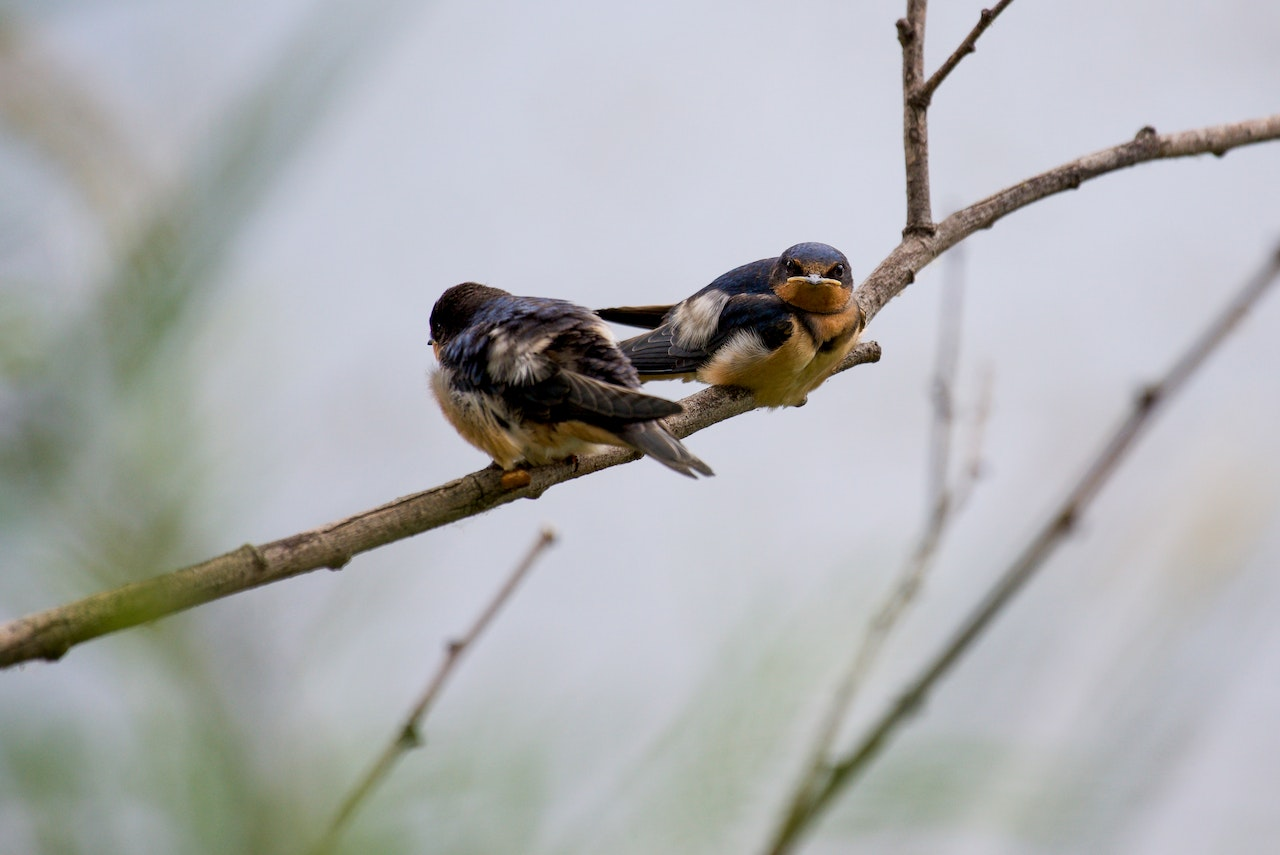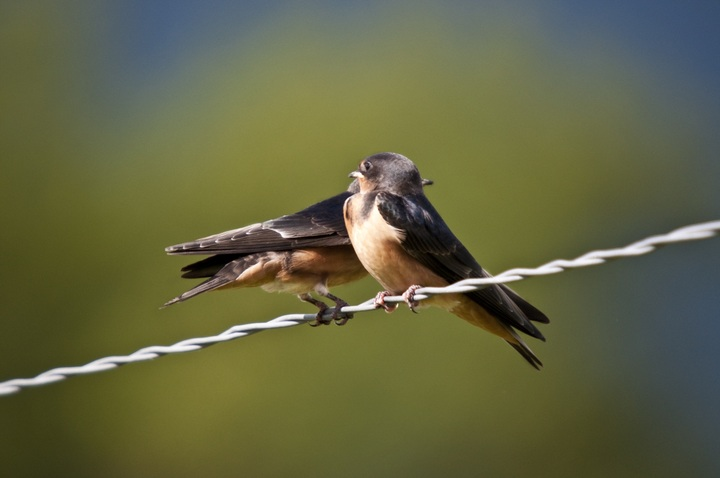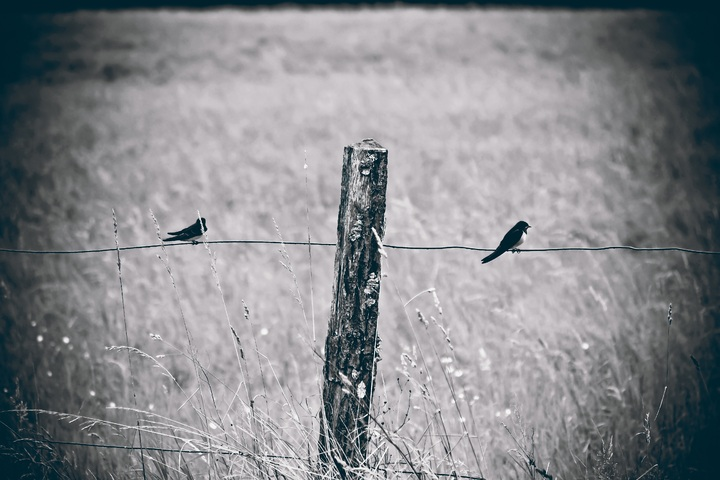Little migratory bird species like barn swallow and cliff swallows are frequently spotted breeding near people. Although these two species might initially seem similar, several significant distinctions exist between them. Birdwatchers and nature lovers may precisely identify each species and enjoy its distinctive behaviors and qualities by being aware of these variances.
The differences and similarities between cliff swallows and barn swallows, including their habitat, appearance, behavior, and migration patterns, will be discussed in this article.
What are Barn Swallows and Cliff Swallows

Although both barn and cliff swallows are species of birds in the Hirundinidae family, there are clear distinctions between them in terms of appearance, behavior, & habitat. One of the most common and well species of swallows is the barn swallow (Hirundo rustica). They feature a fiery red face and throat, a vivid blue back & wings, and a sharply forked tail. Barn swallows live in open regions such as farms, meadows, and fields, constructing their cup-shaped nests upon ledges, beneath eaves, and in other protected locations.
Unlike barn swallows, cliff swallows (Petrochelidon pyrhonota) grow smaller and have a square-shaped tail. Its back and wings are pale brown, while its forehead and throat are white. Cliff swallows inhabit drier regions such as cliffs, canyons, & gorges, where they construct their gourd-shaped nests of mud pellets, sometimes in vast colonies.
Barn swallows are much more acrobatic and graceful in their activity, and they grab their bug meal on the flight. In contrast, cliff swallows typically forage closer to the ground, catching insects in the air or picking them off surfaces. Both species migrate, and the wintering grounds for both are South America.
History of Swallows
A family of birds known as swallows may be found throughout the globe. There are over Ninety species of swallows, distinguished by their astounding aerial gymnastics and propensity for catching flying insects.
Swallows have existed for a very long period. Several civilizations have venerated swallows, including ancient Greeks & Romans, who saw them as a representation of constancy and love. Indeed, the Greek philosopher Aristotle spent a lot of time in his writings discussing swallows and explaining their habits and behavior.
Swallows were frequently portrayed in literature and art throughout the Middle Ages because they were considered lucky signs. They were also utilized in some treatments since they have therapeutic qualities—the study of birds particularly swallows, advanced in sophistication in the 19th century. Swallow behavior, migration patterns, & ecology have all been studied by scientists, which has improved our knowledge of these birds.
Swallows still play a significant role in the natural world today. They are prized for their beauty & elegance, and they significantly impact the management of insect populations. Yet, the extinction of their habitat and the effects of climate change pose dangers to several swallow species, making conservation efforts vital to their survival.
The Differences between Barn Swallow and Cliff Swallow

Both the cliff swallow & the barn swallow belong to the larger Aves family and class Hirundinidae. Although both of these birds are swallows, this article will focus on some of their fundamental distinctions that can assist in differentiating them from one another. The cliff swallow & the barn swallow differ in various ways, including size and appearance. As we move along, we’ll give more specific details.
🐦Appearance
Barn swallows, and cliff swallows each have striking looks. The cliff swallow has a black beak, black feet, dark brown plumage, red cheeks, and a cream/white forehead. In addition, male cliff swallows are typically more colorful than females.
Yet the barn swallow does have a blue top with blackish undertones and a white/beige belly. Moreover, it features a gray-and-black feather with an orange-and-cinnamon forehead. It should be simple to distinguish between the cliff, and barn swallows once you pay attention to these distinct physical characteristics.
🐦Size
There are many similarities between the barn swallow and the cliff swallow, but the size isn’t one of them. The cliff swallow has a wingspan of 11 to 11.8 inches, is around 5-6 inches long, and weighs 0.78 to 0.85 ounces. On the other hand, the barn swallow is between 5.9 and 7.5 inches long, weighs between 0.6 and 0.7 ounces, and has a wingspan between 11.4 and 13.3 inches. According to these measurements, the cliff swallow is heavier than the barn swallow, which is larger in length and wingspan.
🐦Habitat and Location
Also, the habitats and geographic ranges of cliff swallows & barn swallows differ. Whether it is the nesting or migrating season, cliff swallows may usually be found throughout North America & Central America. They may frequently see during mating seasons from Alaska to the eastern & western coastlines of the United States, as well as up north to Quebec and Ontario.
The South-Eastern United States and nations in South and Central America, including Cuba, Argentina, the Bahamas, and Paraguay, are included in the migratory range. In addition to big structures and meadows with mud and water patches, habitats can also include canyons, hills, & cliff cliffs.
Contrarily, the breeding range of barn swallows includes parts of Northern Europe, North America, the Middle East, Northern Africa, Southern China, & Japan. They would go to South Asia, South America, & Indonesia during the winter. In addition to open spaces with water supplies and shelter possibilities, habitats include beneath bridges, the eaves of ancient homes, slow trains, barns, and other agricultural facilities.
🐦Diet
The majority of the food that cliff swallows consume is flying insects, and because they’re opportunistic predators, they don’t care what rank or family the insects are in. Their primary feeding habitats are grassy regions, lakes, and ponds. However, they occasionally consume seeds, grains, & nuts as well. They occasionally eat in groups of 2 to 1000.
99% of the food of barn swallows, mostly insectivores, consists of insects. Nevertheless, we could not locate any instances of their eating seeds, grains, or other vegetation. Flying insects, including grasshoppers, dragonflies, crickets, beetles, and moths, make up a large portion of their diet. Moreover, they are opportunistic foragers with trailing tractors and other farm machinery to feast on insects disturbed through these tools.
🐦Lifespan
Barn swallows normally live for four years on average, but cliff swallows can survive up to eleven years in the wild, though the longest barn swallow ever recorded lived for ten years.
🐦Incubation and Production
With a few minor variations, barn and cliff swallows’ incubation and reproduction procedures are comparable. Cliff swallows chose partners specifically to produce nestlings, making them socially monogamous. Due to their innate propensity for polygamy, they occasionally found other mating pairings despite their monogamous arrangement.
Incubation takes an average of ten to nineteenth days, and female cliff swallows typically deposit four eggs. Both sexes contribute equally to the construction of mud-based incubation nests.
Although male and female parents of barn swallows may have another bird present during nesting and incubation, barn swallows also are socially monogamous. An additional couple aids in nesting, often lightens the load and occasionally mates with a parent, giving the arrangement a polyandrous or polygynous feel. We should also point out that female barn swallows are known to choose males having symmetrical wings & tails during the courting period. The females lay around 4-5 eggs, which are incubated for about 12–17 days by both parents.
How to Identify Barn Swallow and Cliff Swallow

Discover how to identify between a cliff swallow and a barn swallow, two similar birds and sometimes confused. Both cliff swallows & barn swallows are stunning birds frequently mistaken for one another. Both swallows construct mud nests on structures and overpasses.
Find out more about the breeding behaviors and nests of swallows. Both birds have steel-blue backs and reddish-brown throats when perched. Use these useful guidelines to identify between a cliff swallow and a barn swallow for extra assistance in telling these two closely related species apart.
🦅Forehead
The foreheads of these birds are something else to see. The forehead of a cliff swallow can be either white or brown, whereas that of a barn swallow is invariably reddish brown.
🦅Plumage
Look at the coloring one last time. Look for the buff-colored lower back, rump, and light collar across the cliff swallow’s back. The back of the barn swallow is a solid dark blue color from head to tail.
🦅Tail Shape
In flight, cliff swallows & barn swallows may be distinguished by their tail shapes. Whereas the cliff swallow has a small tail, the barn swallow does have a lengthy forked tail and white dots. Find out how to spot a tree swallow, how to attract one, and where to seek violet-green swallows, mostly in the west.
Facts About Swallows
A family of passerine birds called swallows is well-known for their migratory patterns and aerial gymnastics. Here are a few interesting swallow-related facts:
✔️Nest Sites and Nest
Barn & cliff swallows gather mud pellets in their beaks and use them to build nests. Cliff swallow nests have a gourd form, whereas barn swallow nests have a cup shape. These nests include an inner cup with hair, grass, and feathers. Barn & cliff swallows have historically nested on cliffs, canyon walls, and steep banks that are sheltered due to rain.
Nowadays, barn swallows almost often construct their nests on eaves, docks, bridges, or other manufactured buildings with a roof, a vertical wall on which they may be fastened, and a ledge to sustain the nest. Cliff swallow nests are erected on vertical walls, created naturally or artificially, and typically include a protective overhang. Employing freeways, barns, bridges, and other huge structures is common.
Barn swallows typically build their nests in pairs, whereas cliff swallows build their nests in colonies that might include a dozen to hundreds of nesting pairs. External parasite infections are common in barn & cliff swallow nests. Heavy infestations may prevent colonies from being reoccupied, and if parasite numbers get too high, both species will prematurely quit their nests, leaving their young behind.
✔️Reproduction
The elapsed time between the beginning of nest construction and the departure of the young is 44 – 58 days long. Both sexes contribute to nest construction, which starts in April. Between three and five eggs, which hatch after twelve to seventeen days, are incubated by each parent alternately. The parasitism of broods is widespread in cliff swallows. In addition to laying eggs in the nests of other females, females also transport eggs in their beaks from their nests to those of other females.
The young, which start to fly at 20 to 25 days old, are taken for by both parents. When they have mastered flight, the young stay in or close to the nest to be fed by their parents and also to roost at night. After a few days, they depart the nest and stay outside for a few weeks. Each year, cliff and barn swallows can produce two clutches. If nests and eggs are damaged, re-nesting will take place. For instance, nests may fail due to prolonged damp or humid conditions or being built too quickly.
✔️Longevity and Mortality
Young swallows can fall out of their nests or perish from blowflies or other parasitic bugs and mite infections in their nests. Additional causes of juvenile animal fatalities include extreme heat or cold, collapsed nests, and predators such as ravens, crows, starlings, magpies, house sparrows, rodents, domestic cats, and squirrels. Barn swallows populations in Washington have dramatically declined since 1980, although they are still widespread there.
Frequently Asked Questions
How can you distinguish between a cliff swallow and a barn swallow?
Barn swallows have a rusty-colored forehead and neck, a highly forked tail, and blue backs and wings. A squared-off tail, a white forehead, a brownish-orange rump, and a black neck are the distinguishing features of cliff swallows.
What is the barn swallow’s other name?
The Latin word for “swallow” is hirundo, while the term “of the country” is rusticus. With the bulk of Hirundo species being endemic to Africa, this species is the sole member of that genus with a range that extends into the Americas. The “barn swallows” are another name for this genus of blue-backed swallows.
Where do cliff swallows and barn swallows usually lay their eggs?
Cliff swallows normally make their nests on rocky cliffs and canyon walls, while barn swallows frequently build their nests on structures like houses, bridges, as well as other artificial structures.
What makes the cliff swallow interesting?
The cliff swallow is the world’s most colossal swallow, which routinely forms colonies of tropical nests, with a high of 3,700 nests at one Nebraska location. In addition to remaining together in sizable flocks throughout migration as well as on their wintering grounds, they groom, eat, drink, and take baths in groups.
What does a swallow bird have to say?
Swallows are generally connected with summer and springtime in contemporary times, particularly in China. The migration and reemergence of the swallow frequently follow the conclusion of winter. The birds bring in a season that is happier and more vibrant. Because of this, these birds are emblems of fortune or progress.
Final Thoughts
Due to their similar appearances and nesting behaviors, the barn swallow and the cliff swallow are two contrasting bird species. Even though both birds are members of the same species, they differ greatly in appearance and behavior. The barn swallow is distinguished by its sharply forked tail, rust-colored forehead and neck, and penchant for building its nest in barns as well as other man-made structures.
On the other hand, the cliff swallow has a squarer tail, a white forehead, and an eye-catching, conical nest constructed of mud typically found on cliffs or beneath bridges. Although habitat loss and other environmental factors pose challenges to both species, conservation initiatives have helped boost their populations in some places. To secure the survival of these intriguing birds for future generations, it is crucial to safeguard their habitats and support conservation efforts as we keep learning more about them. Do you want to know how to get rid of grackles in trees? Click Here!



